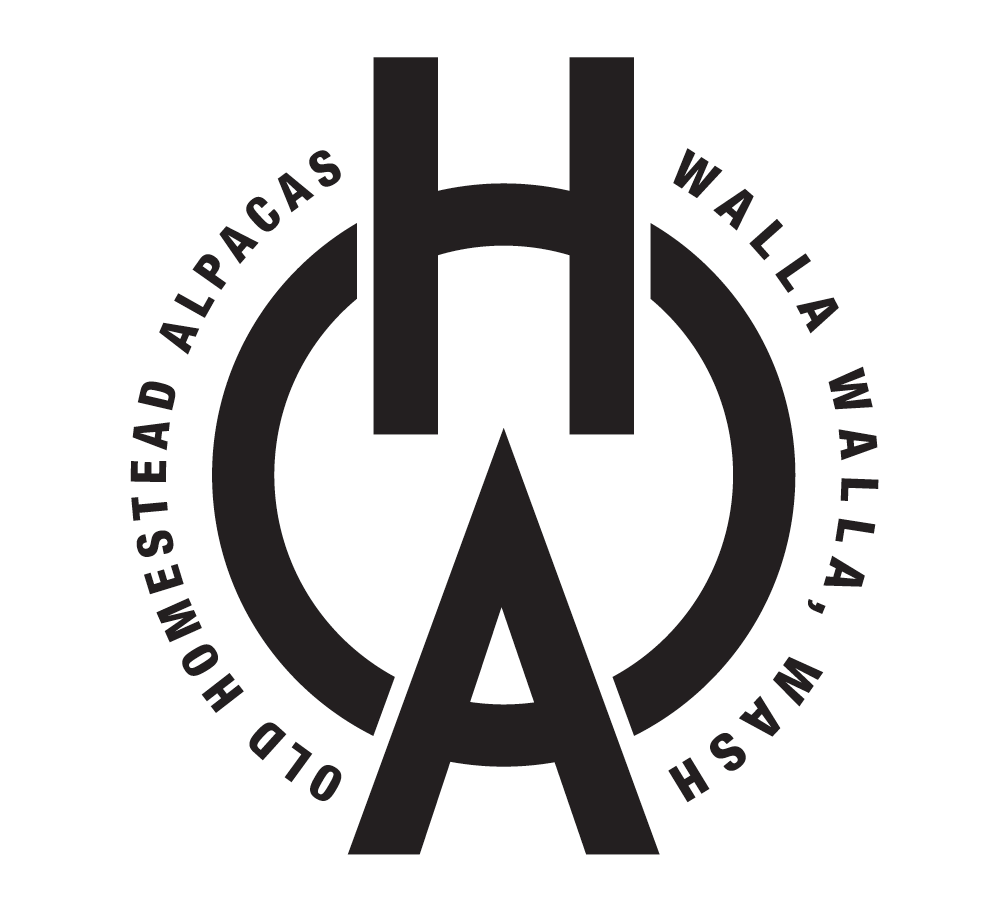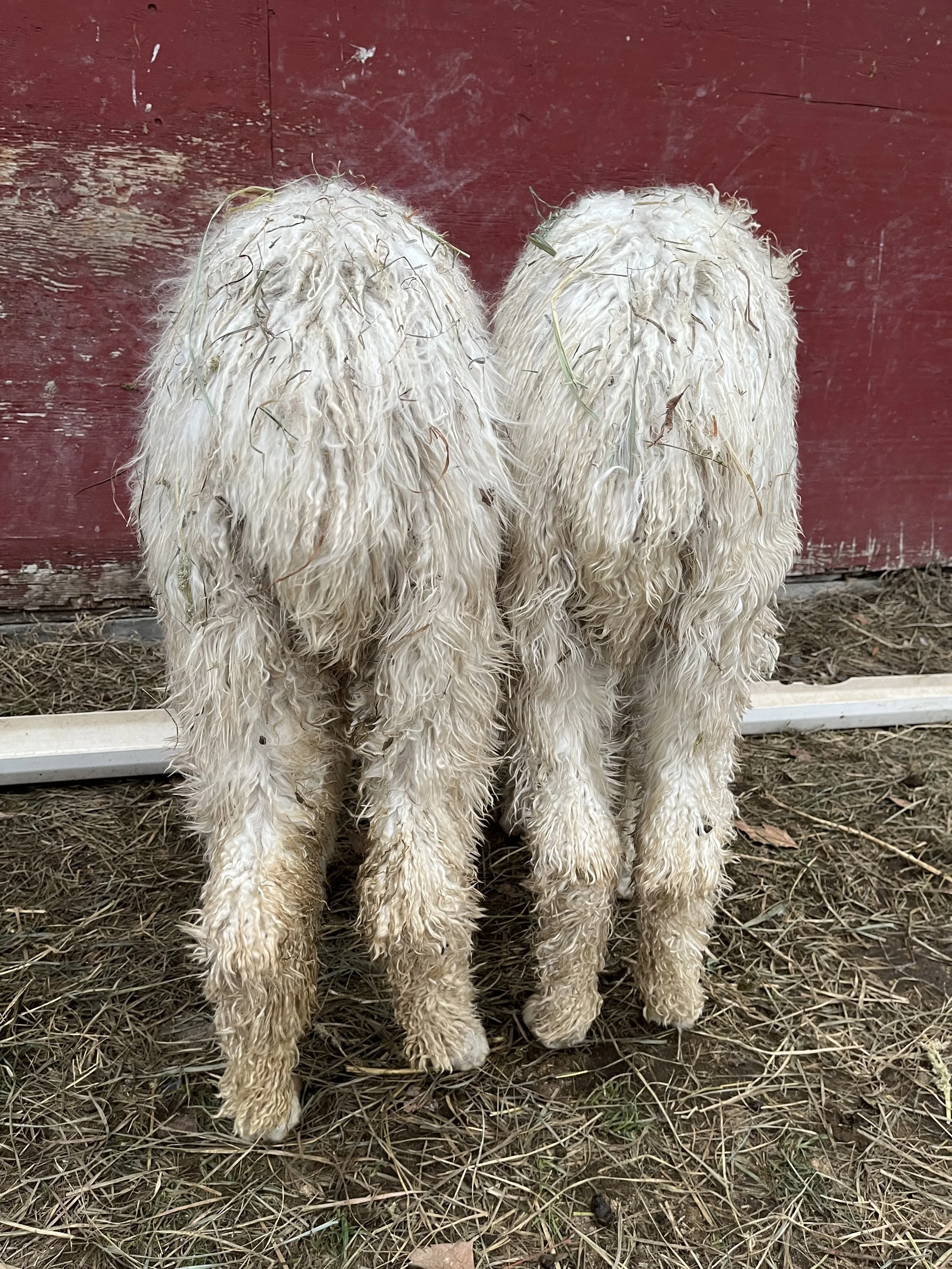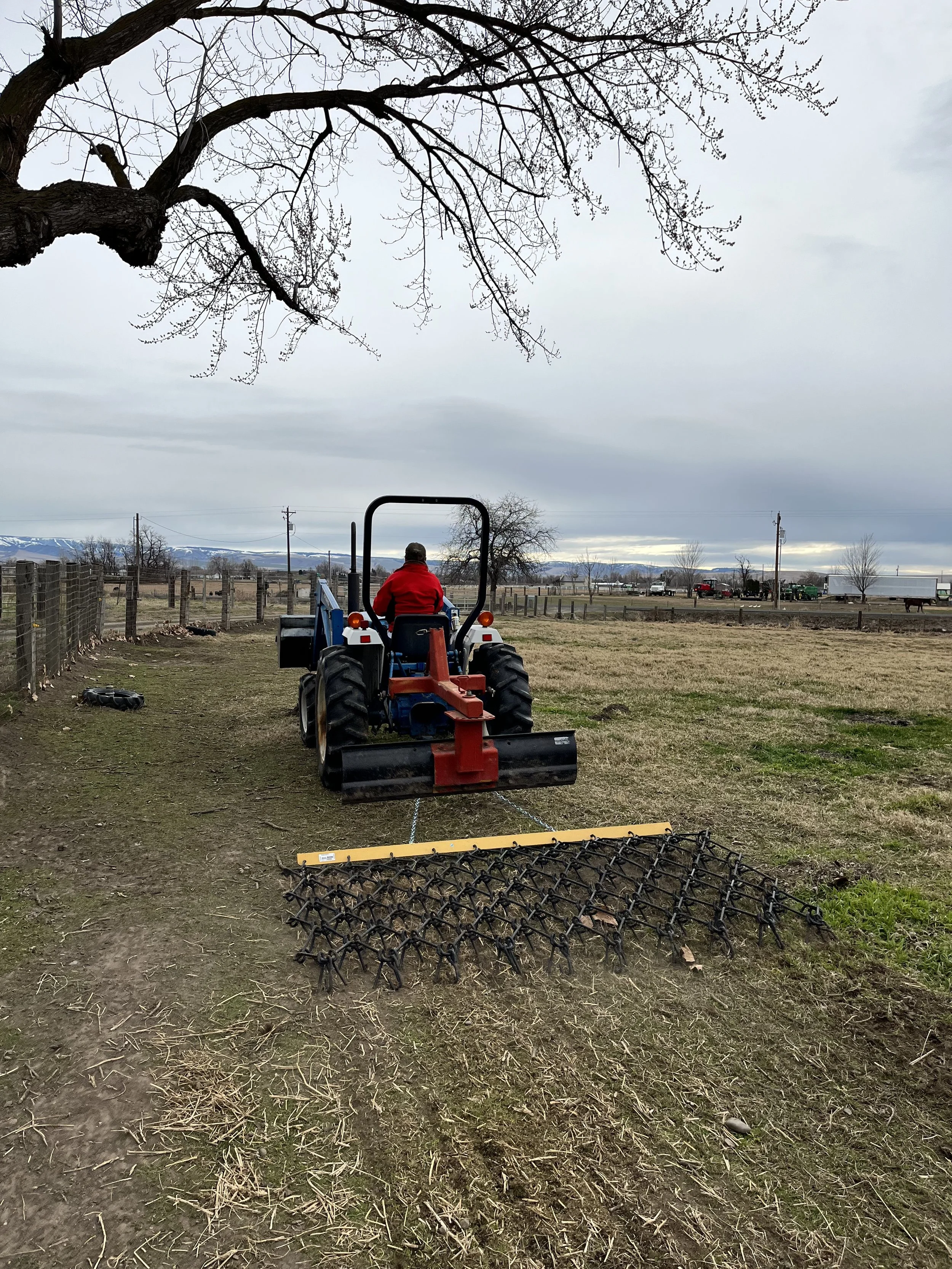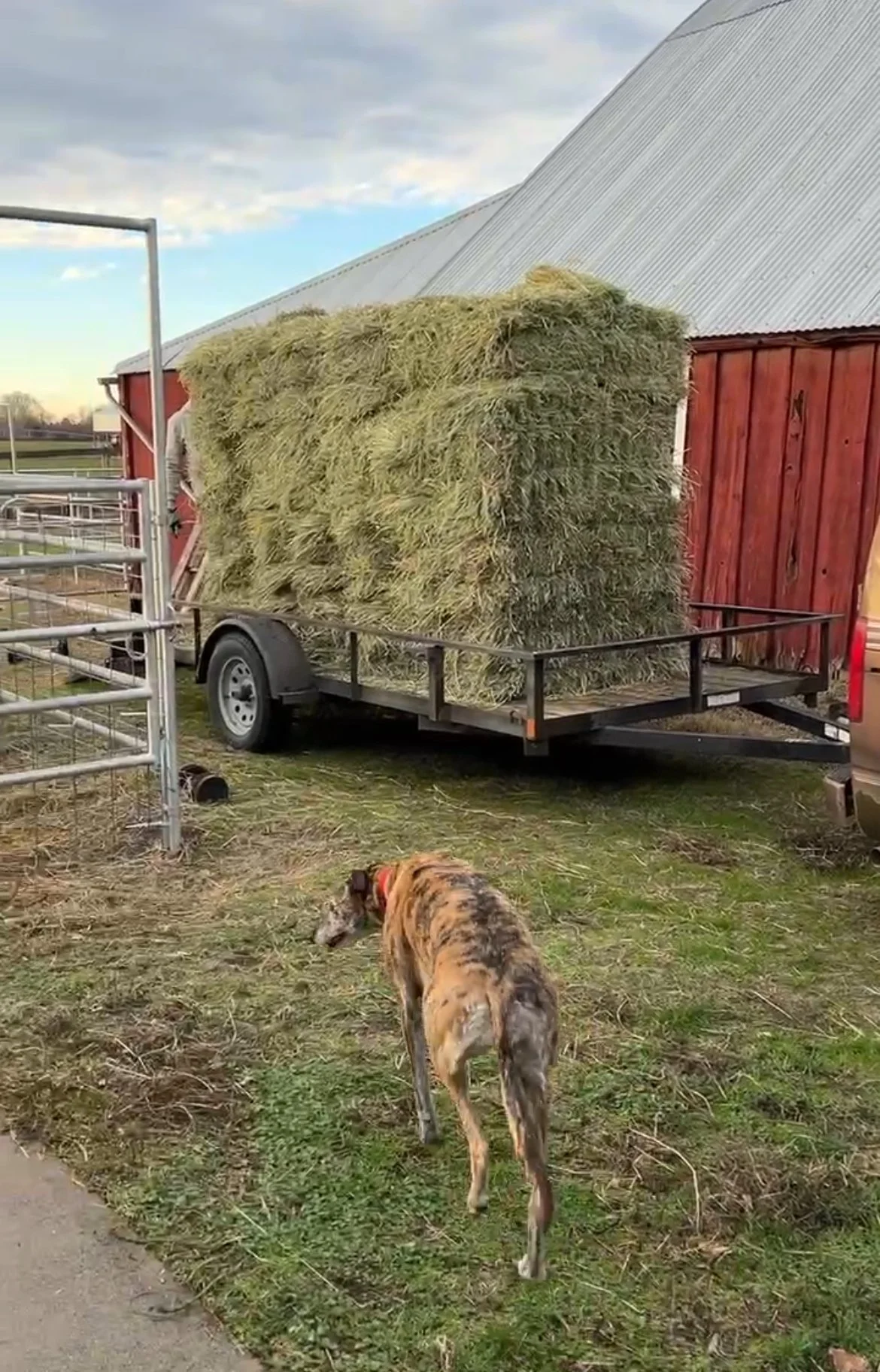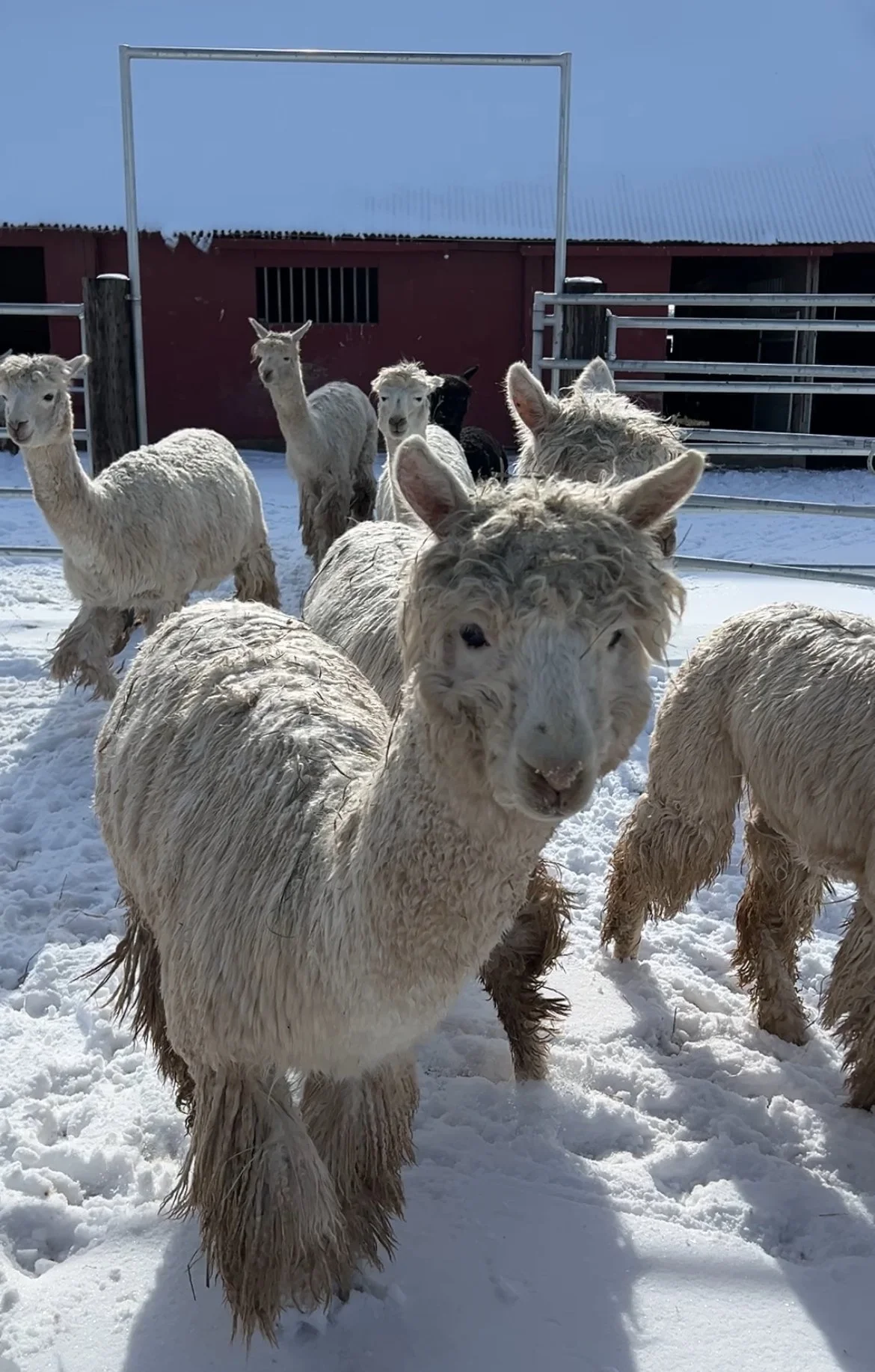Intro to Growing Clothes
In a world where we’re used to click-ship ready products, I wanted to help get us back to our roots by taking you back in time and sharing our process here on the farm.
We are a fiber production farm. Nothing we have is click-ship ready; in fact, anything we have to sell took us nearly 2 years to produce.
We are quite literally growing clothes — as in planting a seed, watering, feeding and cultivating it until it’s grown in such a way that it has utility for us humans.
I’m not sure what you envision when you see the phrase Growing Clothes, or if you think about it at all.
So that’s what this new behind the scenes series aims to explain: our farm-to-garment lifecycle. And specifically, alpaca, because that’s what I’m growing!
To put it plainly, we’re growing alpaca fibers that ultimately become textiles and garments (clothes).
This infographic aims to show the overall process.
I want to bring you along so you can understand what it takes. So that when you see a skein of our yarn, one of our knitwear pieces, or even our dryer balls, you will know all that went into it. Our products are more than just a things — rather they’re the embodiment of a collective effort of real people and our planet.
Unlike mass produced products we all use these days, which are made in far flung places, in unknown circumstances, and composed of who-knows-what, our products are derived from our patch of earth. I personally know the faces behind the American businesses that I rely on, and I’m going to share them with you. Not just for transparency sake, but rather because it’s fascinating, it’s a window into our heritage, and it’s still happening today!
I’m going to put all our inputs and efforts on display — the people, the places and of course, the poop.
So let’s dive in.
Here on our farm, Growing Clothes is broken down into 3 distinct phases:
Growing
Making
Marketing
Today I’m going to start by sharing the Growing Phase, not just because it’s first, but also because it’s currently winter and we’re in the midpoint
And it’s the only Phase we basically never leave, save for a few seconds during shearing.
Alpaca fiber grows at such a rate that it takes a full calendar year for it to grow long enough to be useable.
That means we get one single, solitary fiber harvest a year — and that’s all.
But also, effectively the minute shearing is done, the alpacas immediately resume growing.
We harvest by shearing so I use those words interchangeably. We have our alpaca annual harvest in early spring.
We do this for a number of reasons but mostly because 1) that means the alpaca have a short cut during our hot eastern Washington summers, and 2) we get that fiber into the Value Added processing production line as soon as possible. I’ll share more about value added processing in a future post describing the Making Phase.
Growing is just as it seems — growing the fiber — so naturally this means raising the animal. This can be done a number of ways, and I’m going to share how we do it on our farm.
Not to oversimplify it, but raising any kind of livestock generally centers around providing basic needs: food, water, shelter, safety.
Food.
Food is our largest and continually recurring expense.
Providing our alpacas food is distinguished between the type of feed — fresh grass or hay — which is delineated between the grazing season and the hay season.
Grazing season for us is spring through early fall — with slight variations each year depending on the weather — often late March through September. The herd only grazes on our farm, which encompasses approximately 8 acres of pasture land.
While 8 acres may seem like a lot to many (it’s roughly 6 city blocks in an urban area) that’s quite small for a farm, much less a grazing operation. Fortunately, alpacas are efficient eaters. After all, they’re from the South American andes where vegetation can be sparse at times.
However, in order to control our population, both the female and male herds have 2 separate pastures that they live and graze on. (If you want to know more about Alpaca Birds & Bees, I talk about that here).
With 25 alpacas total, we’re able to comfortably graze them for 7 months (March through September). However, we’re not able to graze them and make our own hay for the winter. That means we must buy in hay grown by neighboring farms. While I’m very grateful to live rurally and in an abundance of high quality hay, it is our our biggest expense in the Growing Phase.
Prices for hay fluctuate; it takes a lot of land, seed, labor, equipment and fuel to grow a hay crop, and all of those costs have variation.
When we first got alpacas in 2014, we paid $225 per ton. In 2024, we paid $365.
As you’d expect, we strive to maximize grazing to keep our own costs down.
So what’s that look like? In the very early spring, that means I take the tractor out and use the pasture drag.
Dragging helps to aerate, which in turn, stimulates growth.
Then there’s irrigation, which is also variable depending on winter snow pack and precipitation. On average, I begin supplemental irrigation by April. This involves moving large 3” diameter, 40 foot long aluminum pipes across each field, from valve to valve.
I could probably do a whole post on irrigating, because that is quite the effort. It’s great work, though. To give you an idea, here’s a 7 second clip to show what it looks like.
Here’s a snapshot of it all —
March, April and May - moving pipe to irrigate about 12-15 days each month
June, July, August and September - it’s more like 15-20 days each month
Grazing ends in September as days shorten, nights cool, and grasses begin to go dormant.
During the grazing season, not much beyond irrigating is required by me to facilitate the alpacas in growing the fiber. I check and refill their water troughs daily, as well as get a general visual on everyone to make sure no one looks hurt or sick.
On super hot summer days, while I’m refilling water, they usually come running up for a refreshing shower.
But generally speaking, when the herd is grazing, they require very little hands on effort. It’s the pastures that require it.
I also subdivide pastures using portable electric netting because they’re selective eaters and will overgraze tender grasses if I don’t move rotate them to different areas.
When we shift to the Hay Season, then the physical work for me continues, it just looks different.
Instead of laboring to grow grass, I shift to hay.
Getting the hay and stacking it in the barn is a big job alone considering we get about 6 tons. With 22 bales to the ton, it’s a full body workout!
Once it’s in the barn, then the work shifts to putting out fresh hay daily, plus feeding a pelletized mineral/vitamin supplement (kibble) a few times a week.
Mid-winter is peak Hay Season aka right now.
We get freezing temps, snow, ice, ice on top of snow, lots of wind and rain — all the winter fun of our pacific northwest climate. I use bucket heaters to keep their water troughs from freezing. But when it’s freezing, hoses can’t be used, so this means hauling buckets of water. Inclement weather also means they’re in the barn and paddock area a bunch, so there’s daily housekeeping (poop scooping).
And when the pastures are covered in snow, they cannot nibble on the bits of dormant grass anymore, so they chew through more hay. Which means suiting up 3x a day, trudging through the snow and topping them up.
Just having typed this out, I’m kind of exhausted thinking about it. But since this is our 11th year, we’ve gotten good seasonal systems in place. It still takes me a few days with each new season to “knock off the rust” on those systems and remember all that’s involved.
As with anything in life, each year brings new challenges. We continue to refine and tweak, hopefully learning more with every passing season.
To Recap.
If you take anything away from this overview on the Growing Phase to produce alpaca fiber, I hope it’s that — in Summer we’re really grass farmers, and in winter, we’re housekeeping!
I say it often — this is the best and hardest work of my life. And I love sharing it with you.
Leave me a comment - let me know what jumped out at you the most, what you still have questions on!
Next month, I’ll share about the Making Phase.
